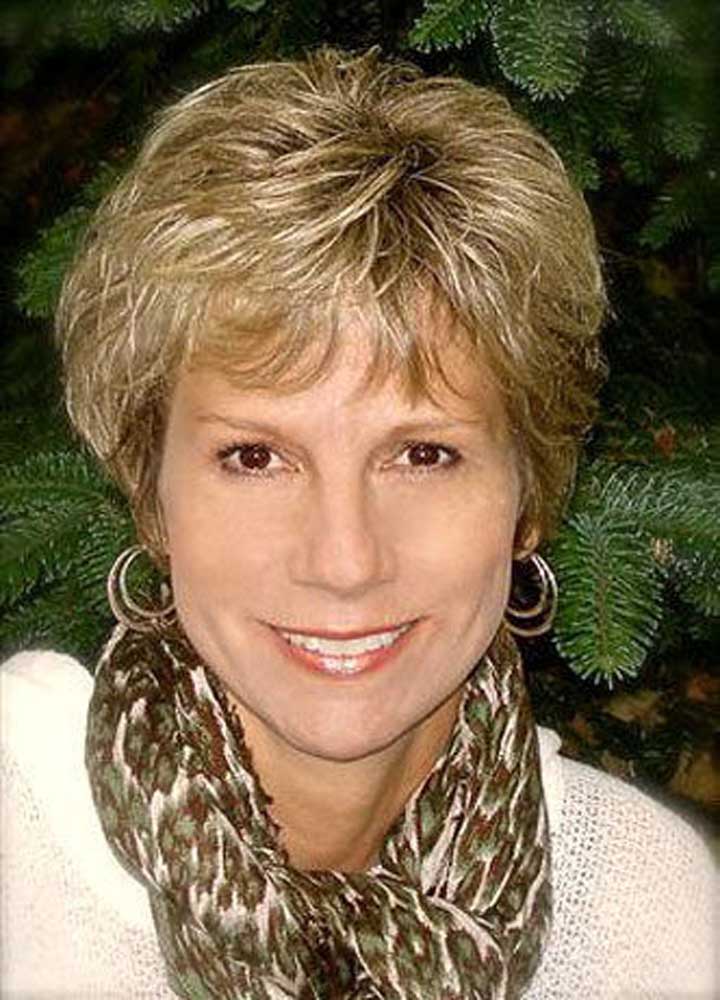Naselle makes cautious school plans
Published 7:56 am Tuesday, September 1, 2020

- Lisa Nelson
NASELLE — The Naselle-Grays River Valley School District has delayed the opening of its school year to Sept. 14 and will go ahead with its plan to open with a hybrid model combining in-classroom and online education, the district announced in an Aug. 24 letter to parents and guardians.
The district is dividing students into two groups, one group attending on Monday and Tuesday and the other on Thursday and Friday, in order to facilitate social distancing at school and on buses. Students will learn remotely the other days of the school week.
The opening was delayed from Sept. 3. This allows time for preparation and for student screening and assessment, which will take place Sept. 3-11.
The school board set its plan for reopening amid the ongoing covid-19 pandemic at an Aug. 18 meeting. The board also passed a motion giving Superintendent Lisa Nelson authority to amend its plan as needed, to allow for rapid decision-making if the public health situation improves or gets worse.
While Pacific County as a whole is in the midst of an outbreak, with 37 cases per 100,000 population as of Aug. 30, the zip-code breakdown on the county’s website has consistently shown Naselle with 0-5 new cases, and may in fact be at zero.
Full-time online schooling is available for families that opt for it. The district is also offering help for families choosing to homeschool. Twenty students are moving to homeschooling, about half of them Running Start students. But parent surveys found a strong desire to reopen in-classroom learning, Nelson said. And teachers were struggling without the ability to connect directly with students.
“We learned it’s kind of lonely” teaching online, Nelson said.
The district has a single school building for all of K-12.
The school week
The school’s division of students into Monday-Tuesday and Thursday-Friday cohorts is to be based on bus routes, and designed to keep them short. To prevent crowding in halls between classes, secondary students are further divided; only half will be released from class at a time. A minute is being added to hall time to accommodate this.
In addition, when one teacher teaches multiple subjects to a class, those classes will be back-to-back to prevent unnecessary hall usage.
“We’re a small enough school that a teacher might have history for one period, English for another. And the whole class — the whole junior class, for example, is all together for all classes. So if a teacher teaches multiple classes, we’ll have them stay in the room and have the classes back-to-back,” Nelson said.
The school day has been shortened to run from 8:35 a.m. to 3 p.m. With many students falling behind after the sudden move to online-only schooling in March, there is time before the school day dedicated to helping students who need to catch up.
“It’s a real struggle,” Nelson said. Last spring, “some students had very minimal engagement. On the other hand, some kids excelled and did better. They were away from some of the typical aspects of high school that you either love or hate. But I’d say the ratio was at least two-to-one [doing worse].”
Since then, “we’ve made changes. We purchased a new online curriculum. We can all navigate Zoom now…. We’re hoping the online curriculum helps. It allows the student to work on learning deficits and catch up.” Assessments and conferences with students before the start of school will give teachers further understanding of each student’s needs.
Making the decision
Schools were closed by Gov. Jay Inslee in March, an order he later extended for the rest of the 2019-20 school year. In June, the state announced tentative plans to reopen schools come fall. The document was hedged with qualifications, but included in bold type a statement from the state superintendent: “To be very clear, it is my expectation that schools will open this fall for in-person instruction,” adding that “the primary planning of most districts should be a presumption of a fall reopening.” In July, Inslee reiterated that he wanted “as much in-class education as possible” in the fall. The state was nudging districts in the direction of reopening, and signaling that a lockdown order for the fall was unlikely.
In the absence of such an order, decision-making largely rested at the local level. The NGRV District surveyed parents and staff to find out their thoughts on returning to in-classroom learning. District officials kept in touch with local health authorities to stay on top of the public health situation. It first announced its hybrid, two-days-a-week plan in a July 22 letter to parents.
In July, coronavirus was spreading rapidly in Pacific County for the first time. But it wasn’t raging in Naselle or its outskirts.
“It’s not just the county data, it’s broken down by zip code on the county website,” Nelson said. “In our zip code, we’re at 0-5 new cases per 100,000. And we don’t know if that means zero or five, but we’re pretty sure it’s zero…. We’re kind of isolated. We know we’re not an island, but, you know, we’re not a tourist destination…. We see ourselves aligned more with Wahkiakum County,” which has had a total of only six confirmed cases over the whole course of the pandemic.
The zip code data as of Aug. 12 shows Pacific County cases concentrated in Long Beach and Raymond. Naselle’s student population includes students from Nemah, in the South Bend zip code, which is also at 0-5 new cases per 100,000, as well as some from Wahkiakum County.
With Naselle’s tentative plans already in place, the state came out with new guidance on Aug. 5. In “high-risk counties,” defined as those with 75 new cases per 100,000 residents over the past two weeks, Inslee “strongly recommended” distance learning.
Pacific County at the time was among 25 counties in the state at that level. It peaked at 110 new cases per 100,000 in early August, though as of Monday it has dipped to 37. Wahkiakum County was among five low-risk counties with under 25 recent cases per 100,000 when the governor issued his guidance.
But this guidance was non-binding, meaning it left local control in place. And in any case, Nelson said, school board chairman Chuck Hendrickson pointed out to her that the guidelines leave room for interpretation. While Inslee’s press release and his slightly longer statement on his own Medium web page mentioned only county-level numbers, the Health Department’s more detailed document mentioned county numbers in places but also referred to “level of COVID-19 spread in the community.” The word “community” seemingly leaves room for consideration of differences within a county.
With so many variables involved in the ongoing fight against the virus, Nelson could not point to a definite criterion for what would lead the district to fully reopen, or to move fully to remote learning.
“It’s a matter of watching the data, working with health partners, and talking to other schools and seeing what they’re doing,” Nelson said.
‘We’ve made changes. We purchased a new online curriculum. We can all navigate Zoom now…. We’re hoping the online curriculum helps. It allows the student to work on learning deficits and catch up.’
Superintendent Lisa Nelson









